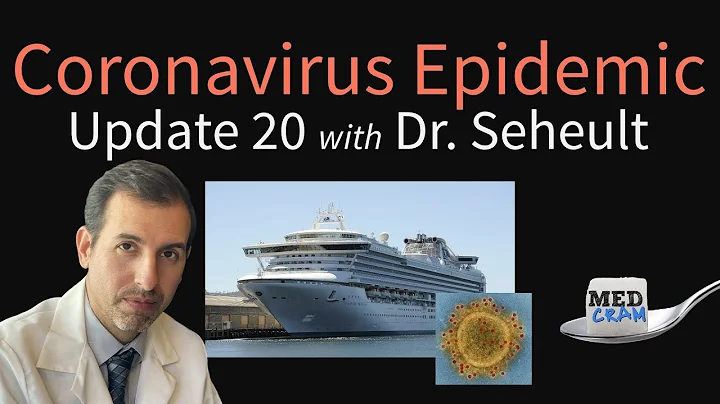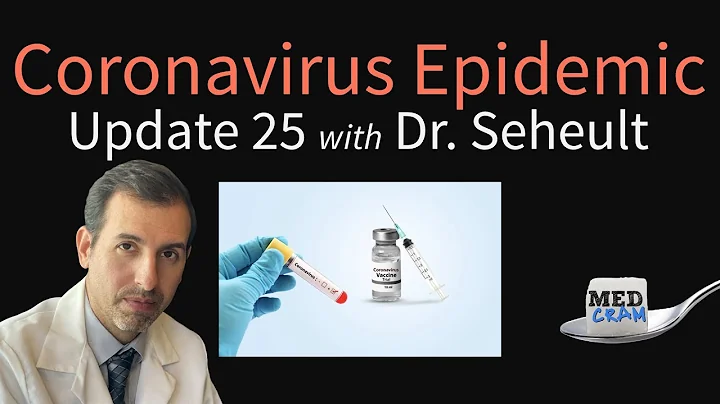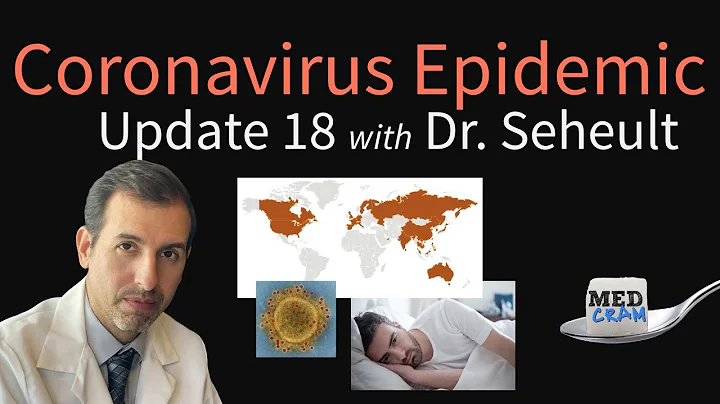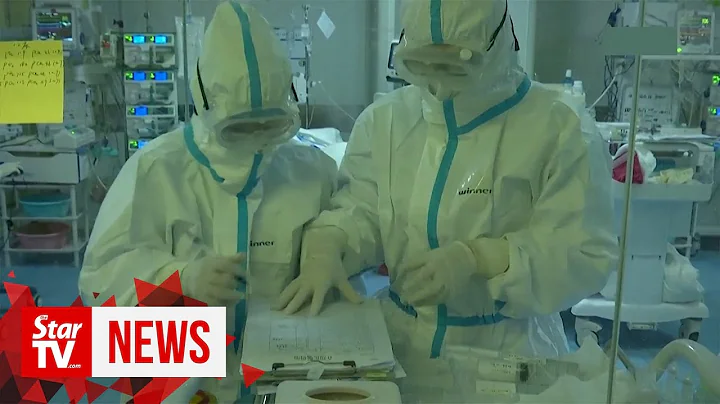In order to prevent the new coronavirus pneumonia epidemic from continuing to spread and spread, protect the health of the people, and maintain normal production, life and traffic order, publicize correct, authoritative, and professional information about the new coronavirus pneumonia to the public. Public protection knowledge, to avoid public panic, to correctly understand, protect and maintain health. The National Health Commission's Bureau of Disease Control and Prevention organized and compiled it. The Chinese Center for Disease Control and Prevention compiled the "Public Protection Guidelines for Pneumonia Infected by Novel Coronavirus". The following content is the entire book.
1. Coronavirus and new coronavirus
1. What is coronavirus
Coronavirus belongs to the order Nestovirales, the family Coronaviridae, and the genus Coronavirus. It is a type of RNA virus with an envelope and a linear single-stranded positive strand genome. It is a large group of viruses that exist widely in nature. The 5' end of the viral genome has a methylated cap-like structure and the 3' end has a poly(A) tail. The full genome length is 27 to 32 kb. It is the largest genome among currently known RNA viruses.
Coronavirus only infects vertebrates and is associated with a variety of diseases in humans and animals. It can cause respiratory, digestive and nervous system diseases in humans and animals.
2. What are animal coronaviruses?
Animal coronaviruses include mammalian coronaviruses and avian coronaviruses.
Mammalian coronaviruses are mainly alpha and beta coronaviruses, which can infect bats, pigs, dogs, cats, rats, cattle, horses and other animals.
Avian coronaviruses are mainly derived from γ and δ coronaviruses and can infect a variety of poultry birds such as chickens, sparrows, ducks, geese, and pigeons.
3. What are the physical and chemical properties of coronavirus
Human coronavirus is relatively sensitive to heat. The virus is moderately stable in a suitable maintenance solution at 4℃ and can be stored at -60℃ for several years. However, as the temperature increases, the resistance of the virus decreases. For example, HCoV-229E can lose its infectivity at 56°C for 10 minutes or at 37°C for several hours.
Human coronavirus is not acid-resistant or alkali-resistant, and the optimal pH for virus replication is 7.2.
Human coronavirus is sensitive to organic solvents and disinfectants. 75% ethanol, ether, chloroform, formaldehyde, chlorine-containing disinfectants, peracetic acid and ultraviolet light can all inactivate the virus.
4. Epidemiological research on coronaviruses
Globally, 10% to 30% of upper respiratory tract infections are caused by four types of coronaviruses: HCoV-229E, HCoV-OC43, HCoV-NL63 and HCoV-HKU1. Among the causes of common colds It ranks second after rhinovirus. The infection is seasonal, with the disease peaking in spring and winter each year. The incubation period is 2 to 5 days, and the population is generally susceptible. It is mainly spread through person-to-person contact.
Severe acute respiratory syndrome (SARS) is caused by human infection with SARS-CoV. The incubation period is usually limited to within 2 weeks, usually about 2 to 10 days. The population is generally susceptible. SARS patients are the main source of infection. Patients with obvious symptoms are highly contagious, while patients in the incubation period or cured are not contagious. Since 2004, there have been no reported human cases of SARS globally.
Middle East respiratory syndrome (MERS) is a viral respiratory disease caused by MERS-CoV. The incubation period is 2 to 14 days, and the population is generally susceptible. Dromedary camels are the main reservoir host of MERS-CoV and the main source of infection for human cases, with limited human-to-human transmission capacity.
5. What is the novel coronavirus
Coronaviruses are a large family of viruses known to cause illnesses ranging from the common cold to severe lung infections such as Middle East Respiratory Syndrome (MERS) and Severe Acute Respiratory Disease. Syndrome (SARS). The new coronavirus 2019-nCoV discovered in Wuhan this time is a new coronavirus that has not been found in humans before.
6. What are the characteristics of the new coronavirus
The new coronavirus belongs to the beta genus and is enveloped. The particles are round or oval, often pleomorphic, and have a diameter of 60 to 140 nm. Its genetic characteristics are significantly different from SARSr-CoV and MERSr-CoV. Current research shows that it has more than 85% homology with bat SARS-like coronavirus (bat-SL-CoVZC45).When isolated and cultured in vitro, 2019-nCoV can be found in human respiratory epithelial cells in about 96 hours, while it takes about 6 days to isolate and culture in Vero E6 and Huh-7 cell lines.
Most of our understanding of the physical and chemical properties of coronaviruses comes from research on SARS-CoV and MERS-CoV. The virus is sensitive to ultraviolet light and heat. Lipid solvents such as 56°C for 30 minutes, ether, 75% ethanol, chlorine-containing disinfectants, peracetic acid and chloroform can effectively inactivate the virus. Chlorhexidine cannot effectively inactivate the virus.
7. What are the coronaviruses that can infect humans?
So far, in addition to the new coronavirus that caused the viral pneumonia outbreak in Wuhan, a total of 6 coronaviruses that can infect humans (HCoV-229E, HCoV-OC43, SARS-CoV, HCoV-NL63, HCoV-HKU1 and MERS-CoV).
HCoV-229E and HCoV-NL63 belong to the alpha coronavirus. HCoV-OC43, SARS-CoV, HCoV-HKU1 and MERS-CoV are all beta coronaviruses. Among them, HCoV-OC43 and HCoV-HKU1 belong to subgroup A, and SARS -CoV belongs to subgroup B, and MERS-CoV belongs to subgroup C.
8. Can the new coronavirus be transmitted from person to person?
Based on the current evidence, it can be determined that the new coronavirus can continue to be transmitted from person to person. The currently identified transmission routes are mainly respiratory droplet transmission (sneeze, cough, etc.) and contact transmission (picking your nose, rubbing your eyes, etc. with hands that have been exposed to the virus).
2. Novel coronavirus-infected pneumonia
9. Transmission routes of new coronavirus-infected pneumonia

10. What are the symptoms of coronavirus infection
Common coronaviruses that can infect humans usually cause mild or moderate upper respiratory tract illness , such as a cold. Symptoms are mild and mainly include runny nose, headache, cough, sore throat, fever, etc. Sometimes it causes lower respiratory tract illnesses, such as pneumonia or bronchitis, and is more common in people with heart and lung disease, people with compromised immune systems, infants, and the elderly.
11. What are the symptoms of novel coronavirus infection?
The general symptoms of novel coronavirus infection include: fever, fatigue, dry cough, and gradually difficulty breathing; some patients have mild onset symptoms, or even no obvious fever. Severe symptoms include: acute respiratory distress syndrome, septic shock, metabolic acidosis that is difficult to correct, and hemorrhage and coagulation dysfunction. Judging from the current cases treated, most patients have a good prognosis, while a few patients are in critical condition or even die. In addition to the above symptoms,
may also have "atypical" symptoms. For example:
(1) only has digestive system symptoms as the first manifestation: such as mild anorexia, fatigue, poor energy, nausea and vomiting, diarrhea, etc.
(2) The first manifestation is neurological symptoms: such as headache.
(3) Symptoms of the cardiovascular system are the first manifestations: such as palpitation, chest tightness , etc.
(4) The first manifestation is ophthalmic symptoms: such as conjunctivitis .
(5) Only mild muscle soreness in limbs or lower back.
12. What are the differences between pneumonia symptoms of new coronavirus infection and influenza symptoms
Influenza symptoms mainly include fever, headache, myalgia and general malaise. The body temperature can reach 39~40℃, and there may be chills and chills, which are often accompanied by muscles all over the body. Systemic symptoms such as joint soreness, fatigue, and loss of appetite often include sore throat, dry cough, nasal congestion, runny nose, and retrosternal discomfort. The face is flushed and the conjunctiva of the eyes is congested. Some are characterized by vomiting, abdominal pain, and diarrhea, and are common in children infected with influenza B. The course of the disease in patients without complications is self-limiting. After more than 3 to 4 days of onset, the body temperature gradually subsides and systemic symptoms improve, but it often takes 1 to 2 weeks for cough and physical recovery. Pneumonia is the most common complication of influenza, and other complications include neurological damage, heart damage, myositis, rhabdomyolysis syndrome, and septic shock.
At present, there is insufficient clinical data on the symptoms of pneumonia caused by new coronavirus infection. According to the existing case data, pneumonia caused by the new coronavirus is mainly characterized by fever, fatigue, dry cough, etc., and a few patients are accompanied by upper respiratory tract and gastrointestinal symptoms such as nasal congestion, runny nose, diarrhea, etc. Severe cases often develop dyspnea after 1 week, and severe cases rapidly progress to acute respiratory distress syndrome, septic shock, difficult-to-correct metabolic acidosis, and hemorrhage and coagulation dysfunction.It is worth noting that severe and critically ill patients may have moderate to low fever or even no obvious fever during the course of the disease. Some patients only present with low-grade fever and mild fatigue without symptoms of pneumonia, and most of them recover after 1 week. A small number of infected people have no obvious clinical symptoms and only test positive. Judging from the current cases treated, most patients have a good prognosis, children have relatively mild symptoms, and a few patients are in critical condition. Death cases are more common in the elderly and those with chronic underlying diseases.
13. Who are the suspected exposed persons?
Suspicious exposed persons refer to those who are exposed to patients, wild animals, items and environments who have tested positive for the new coronavirus, and who do not take effective protection when exposed, such as processing, selling, handling, distribution or management personnel .
14. Who are suspected cases?
Those who have a history of travel or residence in Wuhan or other areas where local cases continue to spread in the 14 days before the onset of illness; have been exposed to fever from Wuhan or other areas where local cases continue to spread within 14 days before the onset of illness. Or patients with respiratory symptoms; those with clustered incidences or epidemiologically related to patients infected with the new coronavirus. At the same time, it is consistent with the following clinical manifestations:
(1) fever.
(2) has the imaging characteristics of pneumonia, that is, multiple small patchy shadows and interstitial changes are present in the early stage, and the extrapulmonary bands are obvious. It then develops into multiple ground-glass opacities and infiltrates in both lungs. In severe cases, lung consolidation may occur, and pleural effusion is rare.
(3) The total number of white blood cells in the early stage of the disease is normal or reduced, or the lymphocyte count is reduced.
15. How to diagnose novel coronavirus-infected pneumonia
on the basis of meeting the criteria for suspected cases, real-time fluorescence RT-PCR detection of respiratory specimens or blood specimens positive for novel coronavirus nucleic acid, or viral gene sequencing of respiratory specimens or blood specimens, consistent with known novel coronavirus Coronaviruses are highly homologous and can be diagnosed.
16. What are the criteria for determining close contacts?
Close contacts refer to those who have one of the following contact situations with suspected cases, confirmed cases and positive test persons, but do not take effective protection:
(1) living, studying, and working together, or other people who are in close contact, such as working in close proximity or sharing the same classroom or living in the same house.
(2) Medical staff, family members or other persons who have similar close contact with patients, such as visiting or staying in a closed environment, other patients in the same ward and their accompanying persons.
(3) Taking the same vehicle and having close contact with people, including caregivers on the vehicle; traveling companions (family members, colleagues, friends, etc.); after investigation and evaluation, it is found that there is a possibility of close contact with suspected cases and confirmed cases and other passengers and crew members of the positive tester.
(4) After investigation by on-site investigators, it is assessed that the case is consistent with other persons who have been in contact with close contacts.
When determining close contacts and analyzing the possibility of infection and onset, we must comprehensively consider the clinical manifestations of the case, the way of contact with the case, the protective measures taken during the contact, and the circumstances of exposure to contamination from the case. Make a comprehensive judgment based on factors such as the environment and the degree of the object.
17. Why should close contacts be under medical observation for 14 days?
At present, it is very necessary to take preventive public health measures such as stricter medical observation for close contacts. This is a responsible attitude towards public health and safety, and it is also A common practice in the international community. With reference to the incubation period of diseases caused by other coronaviruses, combined with information about pneumonia cases infected by the new coronavirus and the actual situation of prevention and control, the medical observation period for close contacts is set to 14 days, and close contacts are subject to home medical observation.
18. What symptoms require medical treatment?
Pneumonia infected by the new coronavirus is mainly characterized by fever, fatigue, and dry cough. A few patients are accompanied by symptoms such as nasal congestion, runny nose, and diarrhea. Severe cases often develop dyspnea after 1 week, and severe cases rapidly progress to acute respiratory distress syndrome, septic shock, difficult-to-correct metabolic acidosis, and hemorrhage and coagulation dysfunction. If you develop respiratory symptoms, fever, chills, fatigue, diarrhea, conjunctival congestion and other symptoms, you need to seek medical attention promptly.
19. What to do if you suspect that you are infected with the new coronavirus
If you suspect that you are infected with the new coronavirus, first do not go to crowded places, wear a mask, keep a good distance from your family, pay attention to ventilation, pay attention to personal hygiene, and go to the nearest designated hospital for treatment. Visit the fever clinic of the hospital. Take the initiative to tell the doctor who you have come into contact with during the consultation, and cooperate with the doctor in the investigation.
20. What to do if you suspect that someone around you is infected with the new coronavirus
If you suspect that someone around you is infected with the new coronavirus, you must first wear a mask and keep a certain distance from them. At the same time, advise the other person to wear a mask and go to the nearest designated hospital for fever treatment. Outpatient treatment.
21. Can pneumonia infected by the new coronavirus be cured? Some patients have defeated the new coronavirus under the active treatment of doctors, and finally achieved the goal of cure.
22. Are there currently any specific drugs and vaccines for pneumonia caused by the new coronavirus?
There are currently no specific drugs and only symptomatic and supportive treatment. For pneumonia caused by new coronavirus infection, the research and development of drugs and vaccines are in progress. At the same time, the country is also conducting observation and research on some traditional Chinese medicines.
23. What are the current standards for isolation and discharge of pneumonia caused by the new coronavirus
According to the latest "Diagnosis and Treatment Plan for Pneumonia caused by the new coronavirus (Trial Fourth Edition)" standards: body temperature returns to normal for more than 3 days, and respiratory symptoms improve significantly. , if the nucleic acid test for respiratory pathogens is negative twice in a row (the sampling interval is at least 1 day), the patient can be released from isolation and discharged or transferred to the corresponding department for treatment of other diseases according to the condition.
3. Combination of prevention and control, scientific protection
24. How to choose a mask
(1) General population: It is recommended that ordinary people, public transportation drivers and passengers, taxi drivers, sanitation workers, service personnel in public places, etc. wear masks during work. It is recommended to use Medical surgical masks , medical protective masks can be worn if conditions permit and the physical condition permits.
(2) Special groups: High-risk groups who may be exposed to suspected or confirmed cases are, in principle, recommended to wear medical protective masks (N95 and above) and goggles. Patients with certain cardiopulmonary diseases should consult a professional physician before wearing them and choose a suitable mask under the guidance of a professional physician.

25. How to wear a medical surgical mask correctly
(1) The nose clip side faces up, and the dark side faces out (or the folds face down).
(2) Pull the pleats up and down so that the mask covers the mouth, nose, and lower jaw.
(3) Place the fingertips of both hands along the metal strip of the bridge of the nose, from the middle to both sides, and slowly press inward until it is close to the bridge of the nose.
(4) Adjust the mask appropriately so that the periphery of the mask fully fits the face.
It is recommended to replace the mask every 2 to 4 hours. If the mask becomes wet or is stained with secretions, it should be replaced in time.
26. How to wear a mask correctly in public places

27. How to wash hands correctly
(1) Wet your hands under running water.
(2) Take an appropriate amount of hand sanitizer (soap) and apply it evenly to the entire palm, back of hand, fingers and between fingers.
(3) Rub your hands carefully for at least 15 seconds. The specific operations are as follows:
1) Palms facing each other, fingers close together, rub each other.
2) Rub the palms of your hands together along the backs of your hands along the gaps between your fingers and exchange.
3) With palms facing each other, rub the fingers of both hands together.
4) Bend your fingers so that the knuckles rotate and rub in the palm of the other hand, and the exchange proceeds.
5) Hold the thumb of your left hand with your right hand, rotate it and rub it, and then switch.
6) Put the five fingertips together in the palm of the other hand, rotate and rub them, and exchange them.
(4) Rinse hands thoroughly under running water.
(5) Dry your hands and take appropriate amount of hand lotion for skin care.

28. How the public can take personal precautions
(1) Minimize outing activities
1) Avoid going to areas where the disease is prevalent.
2) It is recommended to reduce visits to relatives and friends and have dinner parties during the epidemic period, and try to rest at home.
3) Reduce activities in crowded public places, especially places with poor air flow, such as: public baths, hot springs, cinemas, Internet cafes, KTV, shopping malls, stations, airports, docks, exhibition halls, etc.
(2) Personal protection and hand hygiene
1) It is recommended to wear a mask when going out. Wear a medical surgical mask or N95 mask when going out to public places, seeking medical treatment, and taking public transportation.
2) Maintain hand hygiene. Reduce contact with public objects and parts in public places; wash hands with hand sanitizer or soap under running water, or use alcohol-based hand sanitizer after returning from public places, covering coughs, and before meals and after using the toilet Avoid touching your mouth, nose, and eyes with your hands; when sneezing or coughing, cover your mouth and nose with your elbows and clothing.
(3) Health monitoring and medical treatment
1) Take the initiative to monitor the health of individuals and family members, and take the initiative to measure body temperature when you feel you have a fever. If there are children at home, you should touch their foreheads in the morning and evening, and measure their temperature if they have fever.
2) If you have suspicious symptoms, you should take the initiative to wear a mask and seek medical treatment at the nearest hospital in time. If you have suspicious symptoms of novel coronavirus infection (including fever, cough, sore throat, chest tightness, difficulty breathing, mild anorexia, fatigue, low energy, nausea and vomiting, diarrhea, headache, palpitation, conjunctivitis, mild limbs or muscle pain in the lower back, etc.), you should go to a medical institution in time according to your condition. Try to avoid taking subways, buses and other means of transportation, and avoid going to crowded places. When seeing a doctor, you should proactively tell the doctor your travel and residence history in areas where relevant diseases are prevalent, as well as the people you have been in contact with since the onset of the disease, and cooperate with the doctor to carry out relevant investigations.
(4) Maintain good hygiene and health habits
1) Open windows frequently and ventilate the room frequently.
2) Family members should not share towels, keep the home and tableware clean, and dry clothes and quilts frequently.
3) Do not spit anywhere. Wrap oral and nasal secretions in paper towels and dispose of them in a covered trash can.
4) Pay attention to nutrition and exercise moderately.
5) Do not touch, buy and eat wild animals (i.e. game); try to avoid going to markets that sell live animals (poultry, seafood, wild animals, etc.).
6) Families should prepare thermometers, surgical masks or N95 masks, household disinfection supplies and other supplies.
29. What should people with a history of living in disease-endemic areas do?
(1) Register with the village branch or community as soon as possible and reduce outing activities, especially avoid activities in crowded public places.
(2) Starting from the time you leave the disease-endemic area, conduct self-monitoring of health status twice a day for 14 consecutive days. When conditions permit, try to live alone or in a single room with good ventilation, and try to minimize close contact with family members.
(3) If suspicious symptoms of novel coronavirus infection occur (including fever, cough, sore throat, chest tightness, difficulty breathing, mild anorexia, fatigue, low energy, nausea and vomiting, diarrhea, headache, palpitation, conjunctivitis, mild If you have severe muscle soreness in your limbs or lower back, etc.), you should go to a medical institution in time according to your condition.
Specific guidance and suggestions on the way to medical treatment are as follows:
1) On the way to the hospital, patients should wear a medical surgical mask or N95 mask.
2) If possible, avoid taking public transport to the hospital and open the windows on the way.
3) Wear a mask at all times and maintain hand hygiene at all times. Stay as far away from other people as possible (at least 1 meter) while on the road and in the hospital.
4) If vehicles are contaminated while on the road, it is recommended to use chlorine-containing disinfectants or peracetic acid disinfectants to disinfect all surfaces contaminated by respiratory secretions or body fluids.
30. How to take preventive measures at home
(1) Avoid going to areas where the disease is prevalent.
(2) Reduce activities in crowded public places, especially places with poor air flow, such as public baths, hot springs, cinemas, Internet cafes, KTV, shopping malls, stations, airports, docks, exhibition halls, etc.
(3) Do not touch, buy or eat wild animals (i.e. game); try to avoid going to markets that sell live animals (poultry, seafood, wild animals, etc.). Poultry, meat, and eggs must be fully cooked before consumption.
(4) Keep the room clean, open windows frequently, and ventilate regularly.
(5) Maintain hand hygiene at all times. Reduce contact with public objects and parts in public places; wash hands with hand sanitizer or soap under running water, or use alcohol-based hand sanitizer after returning from public places, covering coughs, and before meals and after using the toilet Avoid touching your mouth, nose, and eyes with your hands; when sneezing or coughing, cover your mouth and nose with your elbows and clothing.
(6) Wear a mask when going out. Wear a medical surgical mask or N95 mask when going out to public places, seeking medical treatment, and taking public transportation.
(7) Maintain good hygiene and health habits. Family members do not share towels, keep the home and tableware clean, and dry clothes and quilts frequently. Do not spit anywhere. Wrap oral and nasal secretions in paper towels and dispose of them in covered trash cans. Pay attention to nutrition and exercise moderately.
(8) Take the initiative to monitor the health of individuals and family members, and take the initiative to measure body temperature when you feel you have a fever. If there are children at home, you should touch their foreheads in the morning and evening, and measure their temperature if they have fever.
(9) Prepare common supplies. Families should prepare thermometers, disposable masks, household disinfection supplies and other supplies.
31. What to do when a family member has suspicious symptoms
(1) If there are suspicious symptoms of pneumonia caused by new coronavirus infection (including fever, cough, sore throat, chest tightness, difficulty breathing, mild anorexia, fatigue, low energy, nausea Vomiting, diarrhea, headache, palpitation, conjunctivitis, mild limb or lower back muscle soreness, etc.), you should seek medical treatment in time according to your condition.
(2) Avoid taking public transportation such as subways and buses, and avoid going to crowded places.
(3) When seeing a doctor, you should proactively tell the doctor your travel and residence history in areas where relevant diseases are prevalent, as well as the people you have been in contact with since the onset of the disease, and cooperate with the doctor to carry out relevant investigations.
(4) Family members of patients should wear masks, keep a distance from other asymptomatic family members, and avoid close contact.
(5) If someone in the family is diagnosed with pneumonia infected by the new coronavirus, other family members should undergo 14 days of medical observation if they are determined to be close contacts.
(6) Disinfect places and items frequently touched by symptomatic family members.
32. How to take precautions in public places
(1) Workers in public places should monitor their own health. If there are suspicious symptoms of new coronavirus infection (including fever, cough, sore throat, chest tightness, difficulty breathing, mild anorexia, and fatigue) , low energy, nausea and vomiting, diarrhea, headache, palpitation, conjunctivitis, mild limb or back muscle soreness, etc.), do not go to work while sick.
(2) If a person is found to have suspicious symptoms of novel coronavirus infection, staff should ask him or her to leave.
(3) Public items and public contact items or parts must be cleaned and disinfected regularly.
(4) Maintain air circulation in public places. Ensure that the air conditioning system or exhaust fan is operating normally, clean the air conditioning filter regularly, and open windows for ventilation.
(5) Bathrooms should be equipped with sufficient hand sanitizer to ensure that water supply facilities such as faucets work properly.
(6) Keep the environment hygienic and clean, and clean up garbage in time.
(7) In disease-endemic areas, the public should try to avoid going to public places, especially places with dense crowds and poor air circulation.
33. How to take precautions in public transportation
(1) Public transportation staff in disease-endemic areas should wear medical surgical masks or N95 masks, and perform health monitoring every day.
(2) It is recommended to prepare thermometers, masks and other items on public transportation.
(3) Increase the frequency of cleaning and disinfection of public transportation, and keep records and labels of cleaning and disinfection work.
(4) Maintain good ventilation in public transportation.
(5) Keep stations and carriages clean and tidy, and clean up garbage in a timely manner.
(6) Make good work and rest arrangements for personnel to ensure that drivers and passengers get adequate rest.
34. How to protect yourself when seeking medical treatment for other diseases
(1) In principle, go to the hospital as little as possible or not, unless you are an emergency or critically ill patient who must seek medical treatment immediately. If you must go to the hospital for medical treatment, you should choose the nearest medical institution that can meet the demand and have a small outpatient volume; if you must go to the hospital, only the necessary and urgent medical examinations and medical operations should be performed, and other items and operations should be performed as elective as possible; If you can choose to visit a department, try to avoid fever clinics, emergency rooms and other clinics.
(2) If you need to go to the hospital, try to understand the situation of the medical institution you plan to visit online or by phone in advance, make an appointment and prepare, be familiar with the layout and procedures of the hospital departments, and minimize the time spent visiting the hospital.
(3) On the way to the hospital and in the hospital, patients and accompanying family members should wear medical surgical masks or N95 masks at all times.
(4) If possible, avoid taking public transport to the hospital.
(5) Maintain hand hygiene at all times and prepare portable alcohol-based hand sanitizer. Keep as much distance as possible (at least 1 meter) between people on the road and in the hospital.
(6) If vehicles are contaminated on the road, it is recommended to use chlorine-containing disinfectants and peracetic acid disinfectants to disinfect all surfaces contaminated by respiratory secretions or body fluids.
(7) Try to avoid touching your mouth, eyes, and nose with your hands, and cover your mouth and nose with a tissue or elbow when sneezing or coughing.
(8) After touching hospital door handles, door curtains, doctors' white coats and other hospital items, try to use hand disinfectant. If you cannot disinfect your hands in time, do not touch your mouth, eyes, and nose. During the hospital visit, stay in the hospital should be minimized as much as possible.
(9) After the patient returns home, he should change his clothes immediately, wash his hands carefully under running water, and wash his clothes as soon as possible.
(10) If suspicious symptoms (including fever, cough, sore throat, chest tightness, difficulty breathing, fatigue, nausea and vomiting, diarrhea, conjunctivitis, muscle aches, etc.) occur, seek medical treatment in a timely manner according to the condition and inform the attending physician of the past 2 days. Weekly activity history.
35. Under what circumstances can medical observation be carried out at home?
Close contacts or suspected exposure persons must undergo medical observation. Medical observation includes home isolation medical observation and centralized isolation medical observation. At present, various places mainly adopt home isolation and medical observation. The period of medical observation is 14 days from the last unprotected contact or suspected exposure of the subject under observation. Those who have not become ill after the observation period can resume normal study, work and life.
36. How to conduct home medical observation for close contacts of cases
Close contacts of confirmed cases of pneumonia caused by new coronavirus infection should undergo medical observation for 14 days starting from the last day of contact with the patient. During the period of observation at home, it is necessary to keep in contact with the medical observation staff, understand the key points of disease observation and care, and master the home preventive measures of hand washing, ventilation, protection and disinfection. Specific suggestions are as follows:
(1) Place close contacts in a single room with good ventilation and refuse all visits.
(2) Limit the activities of close contacts and minimize the activities of close contacts and family members in public areas. Make sure common areas (kitchen, bathrooms, etc.) are well ventilated (keep windows open).
(3) Family members should live in different rooms. If conditions do not permit, keep at least 1 meter away from close contacts. A nursing mother can continue to breastfeed her baby.
(4) Other family members should wear masks when entering the living space of close contacts. The masks should be close to the face and should not touch or adjust the masks in the living space. If the mask becomes wet or dirty due to secretions, it must be replaced immediately. After removing and discarding the mask, wash your hands.
(5) Clean your hands after having any direct contact with close contacts or after leaving the living space of close contacts. Hands should also be cleaned when preparing food, before eating and after using the toilet. If your hands are not very dirty, you can use alcohol-based sanitizer to clean them. If your hands are dirty, wash them with hand sanitizer and running water (pay attention to the safety of alcohol use to avoid accidental swallowing or fire).
(6) When using hand sanitizer and running water to wash hands, it is best to use disposable paper towels. If not, wipe with a clean towel, which needs to be replaced when it becomes wet.
(7) Materials used to cover your mouth and nose when you accidentally cough or sneeze can be discarded directly, or washed properly after use (such as with ordinary soap/detergent and water).
(8) Family members should try to minimize contact with close contacts and their supplies. For example, avoid sharing toothbrushes, cigarettes, tableware, meals, drinks, towels, bath towels, bed sheets, etc. Tableware should be washed with detergent and water after use.
(9) recommends using chlorine-containing disinfectants and peracetic acid disinfectants to frequently clean and disinfect items frequently touched by family members, such as bedside tables, bed frames and other bedroom furniture. Clean and disinfect bathroom and toilet surfaces at least once daily.
(10) Use ordinary laundry soap and water to wash the clothes, sheets, bath towels, towels, etc. of the close contacts, or use a washing machine to wash them with 60-90℃ water and ordinary household laundry detergent, and then dry the above items completely. Place bedding used by close contacts in a laundry bag. Do not shake clothing and avoid direct contact with skin and your own clothing.
(11) Wear a mask, disposable gloves and protective clothing (such as a plastic apron) before cleaning or touching surfaces, clothing or bedding contaminated by human secretions of close contacts. Clean and disinfect hands before putting on gloves and after taking off gloves.
(12) If close contacts of confirmed cases develop suspicious symptoms, including fever, cough, sore throat, chest tightness, difficulty breathing, mild anorexia, fatigue, low energy, nausea and vomiting, diarrhea, headache, palpitation, and conjunctivitis , mild limb or lower back muscle soreness, etc., you should seek medical treatment immediately. Specific guidance and suggestions are as follows:
1) On the way to the hospital, patients should wear medical surgical masks or N95 masks.
2) If possible, avoid taking public transport to the hospital and open the windows on the way.
3) Wear a mask at all times and maintain hand hygiene at all times. Stay as far away from other people as possible (at least 1 meter) while on the road and in the hospital.
4) If vehicles are contaminated while on the road, it is recommended to use chlorine-containing disinfectants or peracetic acid disinfectants to disinfect all surfaces contaminated by respiratory secretions or body fluids.
37. How to protect special groups such as the elderly and children
People generally lack immunity to the new coronavirus, and the elderly, young adults and children are all affected. The elderly and children should take daily protection, wash hands frequently, wear masks when going out, pay attention to a balanced diet, reasonable nutrition, moderate exercise, keep the living environment clean, and maintain indoor air circulation.
38. How do ordinary families do a good job in home disinfection?
During the epidemic period, after going out and returning home, you should wash your hands with hand sanitizer and running water in time, or use alcohol-based hand sanitizer to disinfect your hands. Surfaces of tables and chairs and other objects should be cleaned every day and disinfected regularly; after guests (whose health status is unknown) come, disinfect the surfaces of related indoor objects in a timely manner. You can choose legal and effective disinfectants or disinfectant wipes to wipe and disinfect. Provide indoor ventilation, either natural ventilation or mechanical ventilation. When opening windows for ventilation in winter, care should be taken to avoid colds caused by large temperature differences between indoors and outdoors.
The surface of the object can be wiped with chlorine-containing disinfectants such as chlorine dioxide or disinfectant wipes. For hands and skin, it is recommended to choose effective disinfectants such as iodophor, chlorine-containing disinfectants, hydrogen peroxide disinfectants and other hand and skin disinfectants or quick-drying hand disinfectants for wiping and disinfecting.
39. What disinfection measures should be taken when a patient infected with the new coronavirus appears at home?
After the patient leaves (such as hospitalization, death, release from isolation, etc.), terminal disinfection should be carried out. Objects for terminal disinfection of patients' homes include: living room floors, walls, tables and chairs and other furniture countertops, door handles, patient tableware, daily necessities such as clothes and bedding, toys, bathrooms, etc. Terminal disinfection is generally completed by professionals. For details, please contact the local Centers for Disease Control and Prevention. Other family members are close contacts and should undergo 14 days of medical observation.
40. How to enhance immunity and take other protection
(1) Whether it is coughing, sneezing or runny nose, cover it with paper or handkerchief.
(2) When people come into contact with each other, they should keep a distance of more than 1 meter.
(3) Try to avoid going to crowded places and maintain indoor ventilation.
(4) Carry out more physical exercise to enhance physical fitness and immunity.
(5) To prevent the body’s resistance from declining, rest properly, do not stay up late, and do not overwork.
4. Eliminate panic and respond rationally
41. Can isatis root and smoked vinegar prevent pneumonia caused by the new coronavirus?
Isatis root is suitable for the treatment of febrile diseases such as wind-heat, cold, etc., but has no effect on coronavirus.
Fumigated vinegar cannot achieve the disinfection effect.
42. Can antibiotics treat pneumonia caused by the new coronavirus?
Antibiotics are used to treat bacterial infections. The pathogen of pneumonia caused by the new coronavirus is a virus. Taking antibiotics not only has no preventive and therapeutic effect, but may cause adverse drug reactions, and even Destroy normal intestinal flora.
43. Can wearing multiple layers of masks prevent viruses?
As far as medical masks are concerned, as long as qualified products are worn correctly, only one can achieve the expected protective effect. Wearing multiple masks cannot increase the protective effect. The key indicator of mask protection is air tightness. Just like: if the door is not closed tightly, no matter how thick the door is, it will not prevent theft.
44. How to dispose of used masks
Masks worn by the general population have no risk of spreading the new coronavirus. They can be disposed of according to the requirements of domestic waste classification after use. Masks used by suspected cases and their caregivers should be collected and processed as medical waste. After handling the masks, hands should be washed.
45. What should you pay attention to in terms of diet?
Stop eating wild game! In addition to avoiding eating game, knives and chopping boards used for cutting raw and cooked foods should be fixed and used separately. Some meats and eggs should also be cooked at high temperatures before eating. Drink plenty of water and eat more fresh vegetables and fruits.
46. How to bear the cost of treatment
The National Medical Security Administration and the Ministry of Finance jointly issued the "Notice on Providing Medical Protection for the Pneumonia Epidemic of Novel Coronavirus Infection", which clearly stipulates the medical expenses incurred by patients diagnosed with pneumonia infected by the new coronavirus. Comprehensive security is implemented, and the personal burden is subsidized by the finance. The "Supplementary Notice on Providing Medical Security for the Pneumonia Epidemic of New Coronavirus Infection" requires that the medical expenses incurred by suspected patients (including patients seeking medical treatment in other places) shall be borne by the individual where they seek medical treatment. The place where they seek medical treatment shall formulate financial subsidy policies and arrange funds to implement comprehensive security. , the central government will provide appropriate subsidies as appropriate.
47. How should the public respond scientifically to the psychological panic caused by the epidemic
(1) Pay attention to reliable information, learn scientific knowledge, and do not be blindly afraid.
understands the pneumonia epidemic, prevention and control knowledge and other related information of this new coronavirus infection through the information released by the government and authoritative institutions. Reduce excessive attention to epidemic information, reduce unscientific information that misleads you, and do not believe or spread rumors. Recognize that this disease is mainly transmitted through the respiratory tract, and proactively take personal protective measures such as wearing masks, washing hands frequently, ventilating indoors more, and going out less often.
(2) Maintain a regular schedule, arrange your life reasonably, and pursue inner fulfillment.
Maintain a normal schedule, eat three good meals, drink plenty of water, choose appropriate physical exercises, avoid smoking, drinking, staying up late and other unhealthy lifestyles to protect and enhance immunity.
Arrange the contents of your life and do things that make you happy in a planned way, such as listening to music, reading books, chatting with family or friends, working and studying at home, doing housework, etc.
Control the rhythm of your life, learn something new every day, and pursue inner fulfillment.
(3) Scientifically adjust your psychology, get rid of negative emotions, and maintain a peaceful mind.
Accept negative emotions. Recognize that it is normal for you to have negative emotions, accept your own emotional reactions, and do not blame yourself, nor blame or complain about others.
Learn relaxation techniques. Learn deep breathing relaxation techniques, meditation (mindfulness) techniques, etc. through scientific channels to help yourself relieve negative emotions.
Make good use of social support systems.Communicate more with family or friends to relieve negative emotions, and also help family members or friends deal with negative emotions to help themselves and others.
seek professional help promptly. Pay attention to the emotional state of yourself and your family. If the negative emotions last for a long time and affect your normal life and cannot be solved by yourself, you should seek help from mental health and mental health professionals in time.





















